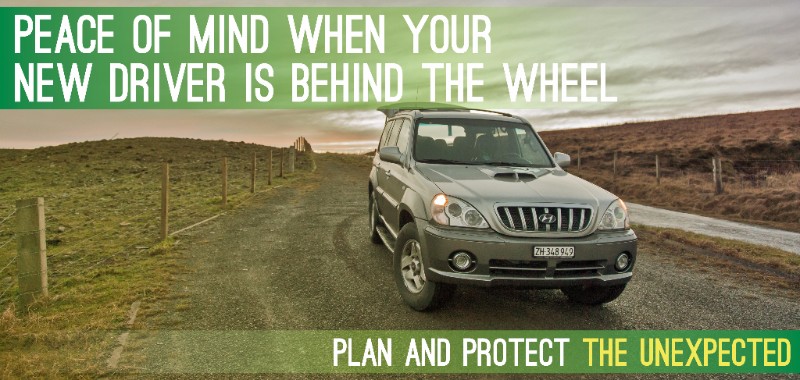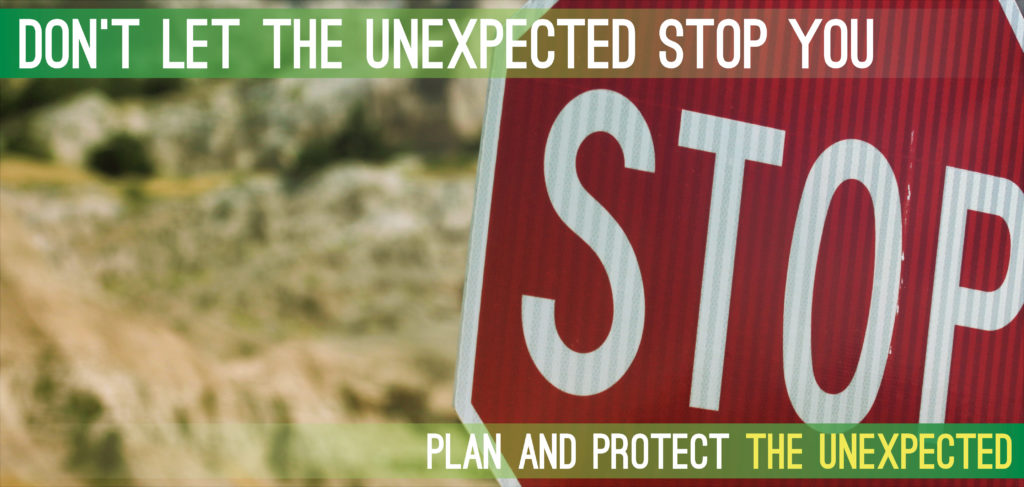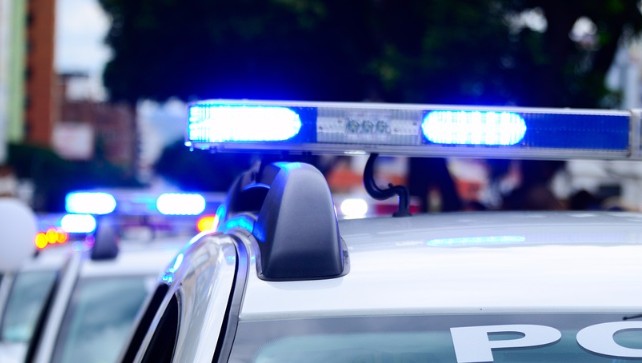
Season of Safety: Safer Travel
Traveling during the holidays is a necessity for many of us. Bringing our families together is a big part of celebrating after all. In this installment of Season of Safety we’re all about planned and protected holiday travel! Whether you’re taking a drive a few cities down or across state lines, there’s lots of ways to make sure your trip goes as smoothly as possible.
Prepping You.
Let’s start with the basics to get you out the door.
Make a List and check it Twice. Our first recommendation is to make a list of the things you need to bring. Make TWO copies of this list; one list to help you pack (the day before the trip) and the other to check off as items are loaded into your car. Now, make another of all the things you need to do as you leave the house. This list includes items like locking all your doors and windows, setting your alarm system and shutting your garage door. Yes, we said shutting the garage door. When you’re in a rush or distracted getting kids situated in the car, it’s easy to forget the obvious.
Coverage and Assistance. Make sure you’re clear on the details of your auto policy. Specifically, ensure whether your coverage includes a road side assistance plan. If you have one, take note of the appropriate phone number and policy number in case you need to use it. For most, this information is on a convenient card. Ensure this is in your car, wallet or purse and is on your list of things to bring (mentioned above).
Mail Service. Most of us are taking extended (overnight or longer) trips. Put a hold on your mail to ensure things aren’t collecting in your mailbox, and more so preventing packages from being left at your doorstep for days. Mail holds can be done online via the postal services website.
Good Neighbors. Call a friend, family member, or neighbor you trust. Let them know you’ll be out of town, and ask them to occasionally check on your home; simple things like collecting your newspapers from your driveway, checking on any vehicles you have parked outside and possibly any weather related issues that may occur while you’re away.
Checking Your Vehicle
Now, let’s get your car ready. Checking the condition of your car should be a regular practice, but it’s especially important before a long trip. Take a look at the following items before you get behind the wheel:
- Tires – Making sure your tires are in good condition is one of the most (if not the most) important items on this list. Check your tire pressure, the condition of your tire tread, and for any damage or cracking on the exterior and interior sides of the tire.
- Fluids – Check the fluid levels of your car; oil, coolant/antifreeze and wiper fluid. Topping off your fluids will help avoid bigger problems along the way.
- Lights – Winter time driving usually requires us to have our lights on even during the daytime. Check for dim or non-functioning lights and replace them. This includes headlights, low and high beams, turn signals and brake lights. If you come across issues with new replacement lights, verify the condition of your car battery and that the problem isn’t indicative of a greater electrical issue.
- Finally, Get Some Gas. Anything that can be done ahead of time is worth the effort. So, fill up the day before (or earlier).
Choosing a Travel Date and Time
Knowing how to get to your destination is just the beginning. Here’s a couple things you may not have thought of.
- Plan for daytime travel. On long trips, having a majority of your travel time during the day is favorable. Though not everyone can accommodate this, we highly encourage those who can to plan their trips for hours when the sun is out and visibility is best.
- Avoid traveling during traffic. Again, for those with flexibility, plan to start your trip on a weekday after rush hour ends (or before it starts if you’re an early bird). Depending on the length of your trip, you may avoid traffic as you approach your destination as well. This is especially important for those of you traveling from one major city or metropolitan area to another; such as between the Bay Area and Southern California.
The Route
It’s time to plan your route. Digital tools like Google Maps can help you a lot. Let the app find you the most convenient route. Some apps now have the option of entering your travel day and start time. This allows the app to use collected data to predict traffic, and allows you to make any adjustments if need be.
This is also a good time to find out if there are any scheduled road closures/construction on your route. Look for the relevant government websites to get this information. While you’re at it, take note of local radio stations that make announcements for any unexpected travel delays while you’re on the road; these stations will often receive accident and traffic information sooner than mapping apps and GPS systems.
Now that you have an expected route, do three things:
- Decide where you’ll be taking your breaks. Often times, we get on the road without knowing where we’ll be stopping next. Plan where you’ll be stopping for gas, getting lunch or just simply taking a break. Taking the time to stretch your legs and refuel (your car and your body) will make the journey less stressful. It’s much better than waiting for your gas light to turn on and hoping a gas station magically appears.
- Find out what your alternative routes are. You don’t have to plan an entire second route to do this. Just know what major highways you can use if needed. Holiday travel can be unpredictable, knowing how to get around a major incident on your expected route can save hours of being stuck in traffic.
- Finally, check the weather forecast. Should you expect things like a slow down due to fog or light rain? Do you need to change your travel day because of an incoming storm? Will you need to put on snow chains? Collecting as much information as possible in advance can only help you.
Drivers and the Holidays
In our previous post, we touched on the high stress of the holidays and how it can affect driving in local areas. Add on an increase of intoxicated drivers and less than ideal weather, and you’ve got a recipe for disaster. Though these situations are out of your control, you can take a couple simple steps to stay safe.
- Slow down. Yes, we’re all trying to get more done this season, but there are other ways to save time than speeding on the freeway. Staying in the middle or lower end of the speed limit on wet roads or in low visibility saves lives. Having that split second of extra time to avoid potholes or other obstacles makes a huge difference.
- Drive Defensively. Be on the look out for things on the road; debris from strong winds, large items that weren’t properly secured by other motorists (think Christmas trees and TVs), remnants from accidents and larger puddles or ice are all indicative of winter road conditions.
Defensive driving also includes distancing yourself from erratic or distracted drivers. Stay alert; some of these will be less obvious than others. Look for vehicles that seem too close to lane dividers, make lane changes too quickly or are speeding in general. Maintain a safe distance and be aware of what other drivers are doing to avoid them.
Try Another Way
Now that we’ve discussed what you should do behind the wheel, let’s talk about you not driving at all. One of the best ways to avoid an accident is not driving! During the holidays, the number of DUI related incidents increases, and your best bet is to keep off the roads especially during the evenings. One of our favorite solutions is Sleep Over or Closer. If you plan on having a few glasses of wine as part of your holiday celebration, simply plan to sleep over at your destination. If you can’t stay exactly where the festivities are, popular home share services can make finding family sized local accommodations affordable. Ride services like Lyft can make transport to and from your rental very inexpensive. We’ve even heard stories of families finding places to stay in the same neighborhood as their relatives. You can have all the fun you want and stay safe doing it. It’s a win-win.
If you’re going out to celebrate in your destination city, find out about local public transportation. Many cities extend the hours of their public transportation systems on holidays like New Year’s Eve, and some even discount or eliminate fare fees. That’s right, FREE.
If getting into your car is unavoidable (which we find hard to believe after the options we’ve given you above), then be responsible. Designate a driver or don’t drink. Many people who think they know how to stay within the limit are wrong, and are actually the most common cause of accidents. So, stay sober or ride with someone who is.
Travel during the season can be stressful, but we hope you can use the above to confidently stay safe. Preparing ahead of time can make all the difference, and making smart decisions on the road can save lives. Plan and Protect for your road trip and enjoy your Holiday get together no matter where you are!


















